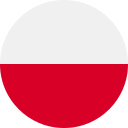Cambridge English: PET (B1 Wstępny) - Zwierzęta i części zwierząt
Przegląd
Fiszki
Pisownia
Test

a subspecies of the gray wolf adapted to survive in the harsh Arctic regions of North America

wilk arktyczny, biały wilk
a tall animal with a very long neck and long legs that has brown spots on its yellow fur

żyrafa, żyrafa (rzeczownik)
a large herbivorous reptilian of the lizard family with a dorsal crest, which lives in tropical areas of America

iguana, jaszczurka iguana
a small mammal that is active at night, which is covered with spines and can roll itself while attacked

jeż, jeż europejski
a large Australian animal with a long tail and two strong legs that moves by leaping, female of which can carry its babies in its stomach pocket which is called a pouch

kangur, walabia
a large ape with a red coat and long arms that lives in the rainforests of Southeast Asia, the male of which develops a throat pouch

orangutan, człowiek leśny
a large black-and-white seabird that lives in the Antarctic, and can not fly but uses its wings for swimming

pingwin, ptak antarktyczny
a large white bear which lives in the North Pole and is well-adapted to its icy environment

niedźwiedź polarny, biały niedźwiedź
a large and majestic deer species found in various habitats across Europe, Asia, and North Africa

jeleń szlachetny, czerwony jeleń
a small mammal with a reddish-brown coat, tufted ears, and a long, bushy tail, known for its agility and arboreal lifestyle

wiewiórka rude, mały ssak o rudawobrązowej sierści
any of the pair of branched horns that grow annually on the head of an adult animal, typically a male one, from the deer family

róg, poroże
the hard or pointed part of a bird's mouth

dziób, dziób ptaka
a sharp and curved nail on the toe of an animal or a bird

pazur, szpon
any of the light and soft parts covering the body of a bird

pióro, puch
the thick, soft hair that grows on the body of some animals such as cats, dogs, etc.

futro, sierść
the horny and hard part at the end of a limb of a mammal, such as a horse

kopyto, noga
hair that grows on the neck of an animal such as a horse, lion, etc.

grzywa, czupryna
an animal's foot that typically has a combination of nails, claws, fur, and pads

łapa, stopa
the part of the body of an animal, a bird or a fish that sticks out at the back, which can move

ogon, ogon zwierzęcia
each of the curved pointy teeth of some animals such as elephants, boars, etc., especially one that stands out from the closed mouth

kieł, cios
any of the long, stiff hairs that grow on the face of a cat, mouse, etc.

wąs, wibrysy
a large aquatic bird with long legs and neck, pink plumage and a broad bill curved downward that lives near warm waters

flaming, różowy flaming
a fast and large bird that is flightless and has long legs and a long neck, native to Africa

struś, szybki i duży ptak
a bird with short legs and a wide beak that naturally lives near or on water or is kept by humans for its eggs, meat, or feathers

kaczka, gęś
a tropical bird with bright colors and a curved beak that can be trained to mimic human speech

papuga, papużka
a large sea fish with a pointed fin on its back and very sharp teeth

rekin, żarłacz
a flying insect that bites people and animals and feeds on their blood

komar, moskit
a small green animal with smooth skin, long legs for jumping and no tail, that lives both in water and on land

żaba, ropucha
an animal that is like a horse but has shorter legs and longer ears, and is used for carrying things and riding

osioł, oślica
a group that animals, plants, etc. of the same type which are capable of producing healthy offspring with each other are divided into

gatunek, gatunki
all wild animals, considered as a whole, living in the natural environment

dzika przyroda, fauna
| Cambridge English: PET (B1 Wstępny) |
|---|